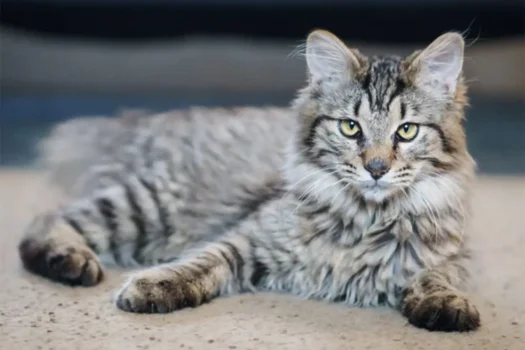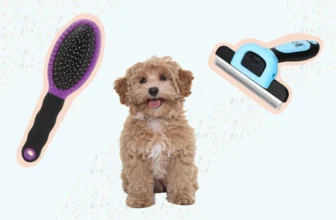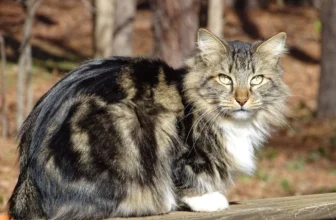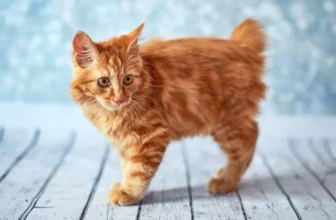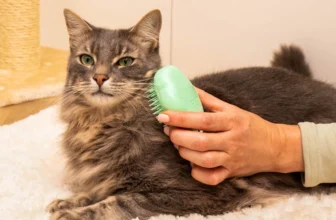Introduction: Why Brushing Your Cat’s Teeth is Important
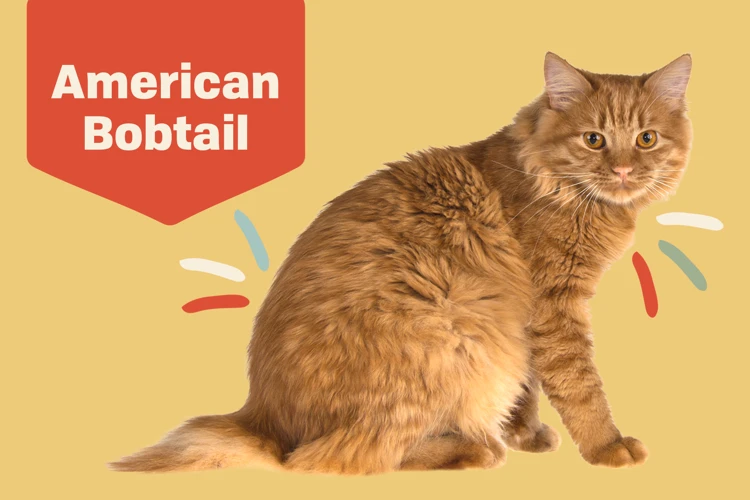
As a cat owner, it is important to keep your pet healthy and happy. And one way to do that is by brushing their teeth regularly. Yes, that’s right, cats need dental care too! Many people don’t realize that dental health is just as important for cats as it is for humans. In fact, dental problems such as gum disease and tooth decay are some of the most common health issues that cats face. By taking care of your American Bobtail’s dental hygiene, you can help prevent these issues and keep your furry friend healthy.
Why is brushing your cat’s teeth important?
Plaque and tartar can build up on your cat’s teeth, leading to dental problems and a host of other health issues. When left untreated, these issues can even lead to more serious health problems such as heart disease and kidney failure. By brushing your cat’s teeth on a regular basis, you can prevent tartar and plaque buildup, and keep their mouth healthy.
What are some common dental problems for American Bobtails?
American Bobtails are generally healthy cats, but they can still experience dental problems. Some of the most common dental issues for American Bobtails include gum disease, tooth decay, and mouth infections. It is important to catch these issues early on, as they can lead to more severe health problems if left untreated.
How can brushing help prevent dental problems in American Bobtails?
By brushing your American Bobtail’s teeth regularly, you can help prevent the buildup of tartar and plaque on their teeth. This, in turn, can help prevent dental problems such as gum disease and tooth decay. Plus, with regular brushing, you can keep an eye on your cat’s dental health and catch any issues early on.
In order to properly care for your American Bobtail’s teeth, it’s important to choose the right toothbrush and toothpaste, create a calming environment, and get your cat comfortable with brushing. By following the steps outlined in this article, you will be well on your way to maintaining your American Bobtail’s dental health. For more information on dental care for American Bobtails, check out our guide on American Bobtail Dental Care.
Step 1: Get Your Supplies
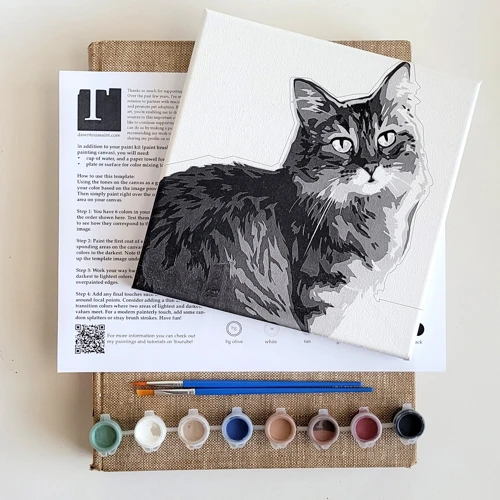
Before you can begin brushing your American Bobtail’s teeth, it’s important to make sure you have all the necessary supplies to make the experience as comfortable and effective as possible. Choosing the right tools will not only make the brushing process smoother, but it will also ensure your cat’s dental health. In this section, we’ll explore the essential items you’ll need and tips for selecting the best toothbrush and toothpaste for your American Bobtail. Make sure to consider any dental problems your American Bobtail may have, and refer to our article on American Bobtail dental health tips for more information on dental care products.
Choosing the Right Toothbrush
When it comes to choosing the right toothbrush for your American Bobtail, there are a few factors to consider. The toothbrush should be specifically designed for cats to ensure that it is safe and effective, and should be soft-bristled to avoid irritation or discomfort for your cat’s sensitive teeth and gums. Here are some tips for choosing the right toothbrush:
- Size: The toothbrush should be appropriately sized for your cat’s mouth. A brush that is too big can be difficult to maneuver and may cause your cat to become uncomfortable.
- Bristle Texture: As mentioned, the bristles should be soft. This will prevent any damage to your cat’s teeth and gums.
- Handle: A toothbrush with a long handle will help you easily reach the back of your cat’s mouth, which is especially important for cleaning those hard-to-reach molars.
- Durability: Look for a toothbrush that is durable and long-lasting. You don’t want to have to replace it after just a few uses.
It’s also important to note that you should never use human toothpaste on your cat. Human toothpaste can contain ingredients that are toxic to cats and can cause serious health problems. Instead, look for toothpaste that is specifically formulated for cats. If you’re not sure which toothbrush or toothpaste is best for your American Bobtail, ask your veterinarian for recommendations or check out some cat dental care products specifically designed for the breed.
Choosing the Right Toothpaste
When it comes to choosing the right toothpaste for your American Bobtail, there are several options available on the market. Make sure to select a toothpaste that is specifically designed for cats, as human toothpaste can contain ingredients that are harmful to felines. Here are some factors to consider when selecting the appropriate toothpaste for your furry friend:
Flavor: Cats can be picky when it comes to the taste of their toothpaste. Some toothpaste flavors that are popular among cats include chicken, tuna, and beef. Consider trying out several flavors to see which one your American Bobtail prefers.
Ingredients: Look for toothpastes that contain enzymes, which are essential for breaking down plaque and tartar buildup. Additionally, some toothpastes contain fluoride to help strengthen your cat’s teeth. Read the label carefully to ensure that the toothpaste you choose does not contain any harmful ingredients.
Texture: Some toothpastes have a gel-like consistency, while others are more of a paste. Consider the texture that your cat is most likely to tolerate, as it is important to ensure that brushing is a comfortable experience for them.
Remember, regular tooth brushing is crucial in maintaining your American Bobtail’s dental health. If left untreated, dental problems can lead to more serious health issues down the line. Learn how to identify common dental problems by clicking here.
Step 2: Get Your Cat Comfortable
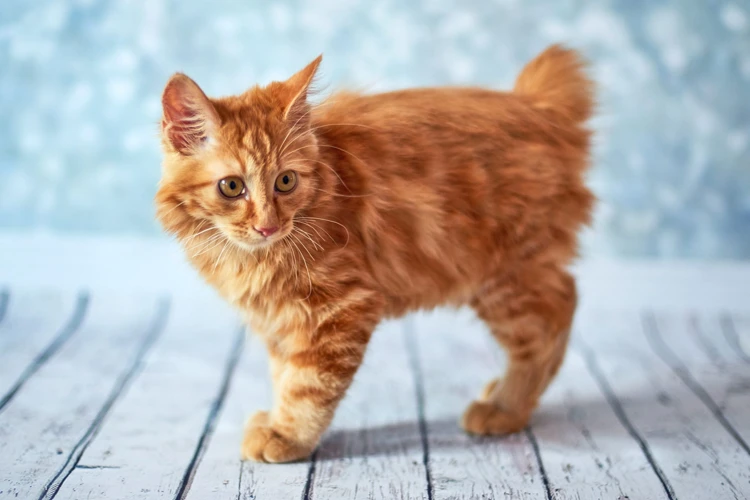
When it comes to brushing your American Bobtail’s teeth, it’s important to ensure that your feline friend is as comfortable and relaxed as possible. Trying to force your cat into the process can be frustrating for both you and your pet, so it’s essential to take the time to make sure your cat is at ease before beginning the brushing process. In this section, we’ll share some tips on how to keep your cat calm before and during the brushing process. Let’s dive in!
Gradual Introductions
When it comes to brushing your American Bobtail’s teeth, it’s important to get them comfortable with the process before diving in. This is where gradual introductions come in handy. Here’s a step-by-step guide on how to introduce your cat to tooth brushing:
| Step | Description |
|---|---|
| Step 1 | Start by getting your cat accustomed to having your fingers in their mouth. You can do this by gently rubbing their gums and teeth with your finger. Make sure to give them plenty of positive reinforcement with treats and praise. |
| Step 2 | Once your cat is comfortable with your fingers in their mouth, introduce them to the toothbrush. Place a small amount of toothpaste on the brush and let your cat sniff and lick it. |
| Step 3 | Next, hold the toothbrush up to your cat’s mouth and let them sniff and lick it again. You can also gently touch the brush to their teeth and gums without actually brushing them yet. |
| Step 4 | When your cat is comfortable with the toothbrush, start brushing their teeth. Begin with just a few teeth at a time and gradually increase the amount. Make sure to use a gentle, circular motion and avoid scrubbing back and forth. |
| Step 5 | Don’t forget to give your cat plenty of positive reinforcement throughout the process. You want them to associate tooth brushing with good things, like treats and praise. |
It’s important to remember that gradual introductions take time and patience. Some cats may take longer to get used to the toothbrush than others. Don’t rush the process and make sure to always end on a positive note. By taking the time to get your cat comfortable with tooth brushing, you’ll make the process easier for both of you in the long run.
Creating a Calming Environment
When it comes to introducing your American Bobtail to teeth brushing, creating a calming environment is crucial to their comfort and cooperation. Here are a few steps you can take to make sure that your feline friend is as relaxed as possible:
1. Choose a quiet, peaceful room. Find a room in your home that is free from loud noises and distractions. Try to minimize foot traffic and any sudden movements that might make your cat feel uneasy.
2. Set the mood. Use a diffuser, like a Feliway® plug-in or spray, to release calming pheromones that will help your cat feel more at ease. You can also play soothing music or use a white noise machine to drown out any external sounds.
3. Get the lighting right. Make sure the room is well-lit, but not too bright. Use a lamp or dimmer switch to adjust the lighting as needed.
4. Provide a comfortable space. Set up a soft bed or cushion for your cat to lay on during the teeth brushing session. If your cat likes to be petted, you can also give them some gentle strokes to help them relax.
5. Use treats. Offer your cat a small treat before the teeth brushing session to create a positive association with the experience. You can also offer treats throughout the session to keep them calm and focused, and to reward good behavior.
By following these steps and creating a calming environment, you can help your American Bobtail feel safe and relaxed during the teeth brushing session. This will make it easier to get them used to the toothbrush and develop a regular brushing routine.
Step 3: Start Brushing
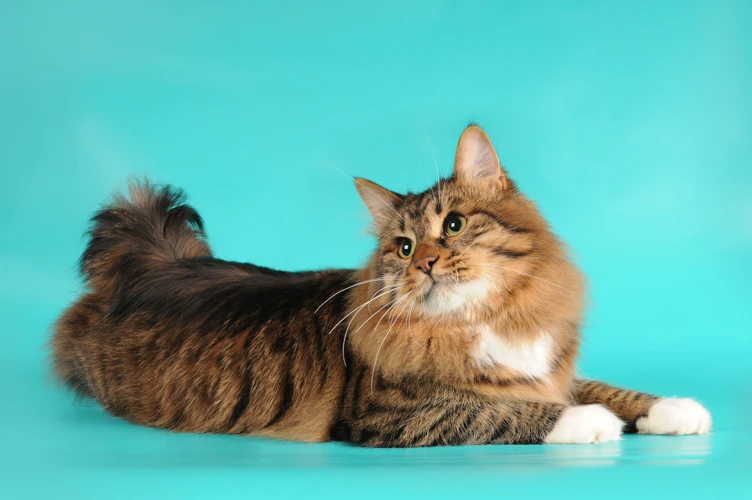
Now that you have everything ready, it’s time to start brushing your American Bobtail’s teeth. Brushing your cat’s teeth is not without its challenges, especially if your cat has never had their teeth brushed before. But don’t worry, with patience and persistence, you can slowly get your cat used to the idea of tooth brushing. In this step, we’ll cover the techniques you can use to introduce the toothbrush and start brushing your cat’s teeth. So, let’s dive in and discover what it takes to give your furry friend a healthy and happy set of teeth.
Getting Your Cat Used to the Toothbrush
It is important to take your time with this step in the tooth-brushing process. Rushing it can make your cat terrified of the toothbrush, making future attempts at brushing their teeth very difficult. Here are some tips to help get your cat comfortable with the toothbrush:
- Let them sniff it: Before attempting to brush your cat’s teeth, allow them to smell and investigate the toothbrush. This will help them become more familiar and less afraid of it.
- Apply toothpaste to their lips: Get your cat used to the toothpaste and the taste by applying it to their lips before using it on the toothbrush.
- Start with short sessions: Begin by only brushing one or two teeth at a time to get your cat used to the sensation of the toothbrush.
- Be gentle: Use a gentle and slow brushing technique, and be sure to avoid pressing too hard on their sensitive gums.
- Give them breaks: If your cat becomes uncomfortable, give them a break and try again later; rushing can make the process more difficult and stressful.
By gradually introducing your cat to the toothbrush and ensuring that they are comfortable with it, the tooth-brushing process will become easier over time. Remember to always go at your cat’s pace and reward them for their patience and good behavior.
Brushing Techniques
When it comes to brushing your American Bobtail’s teeth, there are a few techniques that can help make the process easier and more effective. Here are some tips:
- Start at the back: Begin brushing from the back of your cat’s mouth and work your way forward. This can help prevent your cat from biting down on the toothbrush and potentially hurting themselves or you.
- Use small, circular motions: Use gentle, circular motions to clean the teeth and gums. Focus on the outer surfaces of the teeth, as this is where plaque and tartar tend to accumulate.
- Brush the tongue: Brushing your cat’s tongue can also help remove bacteria that can cause bad breath. Gently brush the tongue with the toothbrush or use a tongue scraper specially designed for cats.
- Don’t forget the molars: The molars in the back of your cat’s mouth are just as important as the other teeth. Take extra care to clean these teeth, as they are especially prone to tartar buildup.
- Be gentle: You may need to experiment with the amount of pressure you use when brushing your cat’s teeth. Aim for a gentle touch, as too much pressure can cause discomfort or even injury.
Remember to always be patient and calm when brushing your cat’s teeth. If your cat becomes agitated, take a break and try again later. With time and persistence, you can help keep your American Bobtail’s teeth healthy and strong.
Step 4: Reward Your Cat
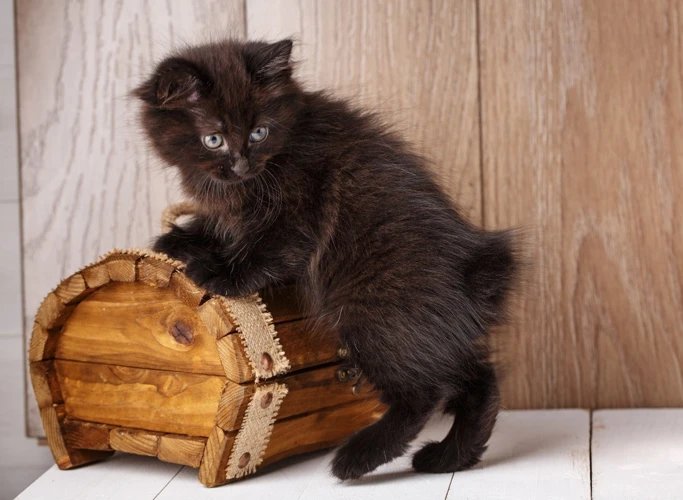
As you start to integrate toothbrushing into your American Bobtail’s routine, it’s equally important to encourage positive behavior. This is where rewarding your cat comes into play. By incentivizing your cat to behave during brushing, you’ll create a positive association with teeth brushing and make the process more enjoyable for both you and your furry friend. So, let’s take a look at some ways to reward your cat for good behavior during toothbrushing sessions.
Treat Your Cat to Positive Reinforcement
When it comes to brushing your American Bobtail’s teeth, positive reinforcement is an essential part of the process. It’s important for your cat to associate tooth brushing with positive experiences, rather than feeling stressed and anxious. Here are some ways to treat your cat to positive reinforcement during tooth brushing:
- Verbal praise: Throughout the brushing process, use a gentle and reassuring tone to speak positively to your cat. Let your cat know that they are doing a good job and that you are proud of them. This will help to soothe any anxiety they may be experiencing.
- Treats: Treats are an excellent way to reward your cat for good behavior during tooth brushing. Choose small, soft, and tasty treats to give your cat after each successful brushing session. Make sure to only give treats in moderation, so as not to upset your cat’s diet.
- Playtime: After each brushing session, take some time to play with your cat. Playtime is an excellent way to reinforce good behavior and provide positive associations with tooth brushing. Choose toys that your cat enjoys playing with, such as strings or balls, and spend some quality time together.
By using positive reinforcement techniques during tooth brushing, your American Bobtail will be more likely to feel calm, happy, and willing to participate in future brushing sessions. Remember to be patient and consistent, and your cat’s dental health will thank you!
How Often to Reward
When it comes to rewarding your American Bobtail for good behavior during teeth brushing, consistency is key. Giving rewards on a regular basis can help maintain positive associations with teeth brushing, making the process smoother and more enjoyable for both you and your furry friend. Here are some tips on how often to reward:
- Start by giving treats and praise after each tooth brushing session. This will help establish a routine and reinforce the behavior.
- As your cat becomes more comfortable with teeth brushing, gradually decrease the frequency of rewards. For example, you can switch from giving a treat after every brushing to giving one after every other brushing.
- Be sure to still provide occasional rewards even after your cat has become accustomed to having their teeth brushed. This will help maintain their positive associations with the process and encourage good behavior in the long run.
Remember that every cat is different, so it’s important to be patient and flexible with your reward system. Some may need more frequent rewards while others may be content with occasional treats. By staying consistent and paying attention to your cat’s needs, you can help make teeth brushing a positive experience for everyone involved.
Step 5: Keep Up With Regular Brushing
Ensuring that your American Bobtail’s dental health is a top priority can extend their lifespan and prevent numerous health complications. To keep your cat’s teeth healthy and strong, it’s crucial to maintain a consistent brushing routine. In this section, we will dive into the best practices for keeping up with regular brushing, scheduling and frequency, and monitoring your cat’s dental health. Follow these recommendations to keep those pearly whites shining and maintain your cat’s overall wellbeing.
Scheduling and Frequency
Scheduling and Frequency: When it comes to brushing your American Bobtail’s teeth, the key to success is consistency. Just like with humans, daily brushing is essential for maintaining good oral health. It may seem like a daunting task to brush your cat’s teeth every day, but it’s well worth the effort to prevent costly dental issues down the line.
To help you stay on track, create a schedule for brushing your cat’s teeth. Choose a time of day that your cat is most relaxed, such as after a meal or a nap. Use a table to keep track of each brushing session, noting the date, duration, and any observations you have. This will help you to keep track of when you need to brush your cat’s teeth next and allow you to identify any changes in your cat’s oral health.
| Date | Duration | Observations |
|---|---|---|
| June 1 | 2 minutes | No signs of discomfort |
| June 3 | 3 minutes | Some resistance, but allowed brushing |
| June 6 | 2 minutes | Teeth and gums look healthy |
Keep in mind that the frequency of brushing will depend on your cat’s individual needs. Some American Bobtails may require more frequent brushing, while others may be able to go a day or two without brushing. Be sure to consult with your veterinarian to come up with a brushing schedule that’s tailored to your cat’s specific needs.
By sticking to a regular brushing routine and tracking your cat’s progress, you can help ensure that your American Bobtail’s teeth remain healthy and strong for years to come.
Monitoring Your Cat’s Dental Health
As important as it is to brush your American Bobtail’s teeth, it’s equally essential to keep an eye on their dental health regularly. Monitoring their dental health can alert you to any potential problems early on, enabling you to take appropriate preventive measures. Here are some things you can do to keep a check on your cat’s dental well-being:
1. Regular Veterinary Checkups: One of the best ways to ensure your cat’s dental health is by taking them for regular veterinary checkups. During these visits, veterinarians will examine the cat’s teeth, gums, and mouth for signs of dental problems, such as tooth decay, gum disease, and oral tumors. They can also advise you on any preventative measures you can take to ensure the health of your cat’s teeth.
2. Regular Brushing: Keeping a record of when you brush your cat’s teeth can also help you monitor their dental health. It ensures that you don’t miss any brushing sessions and allows you to identify any changes in the condition of their teeth, such as discoloration, chipping, or any unusual lumps or bumps.
3. Dietary Changes: Making sure your American Bobtail eats a healthy and balanced diet can also help maintain their dental hygiene. Providing them with dry food can prevent the buildup of plaque and tartar. Additionally, dental chews and toys can help remove food particles and bacteria that contribute to dental problems.
4. Consider Dental Treatments: In some cases, a veterinarian may recommend professional dental cleaning under anesthesia. This treatment may be required if your cat has developed advanced gum disease or tartar buildup. While it can pose certain risks, particularly for older cats, it is one of the most effective ways to treat dental problems.
Keeping track of a cat’s dental health can be challenging, but it is essential to their overall well-being. Regularly brushing their teeth, scheduling veterinary visits, and making necessary dietary changes can help maintain healthy teeth and gums. Remember, healthy teeth mean a happy American Bobtail!
| Dental Health Monitoring Checklist | When to perform |
|---|---|
| Schedule a regular veterinary checkup | Every 6-12 months |
| Keep track of your cat’s brushing sessions | After every brushing session |
| Watch your cat’s eating habits | Daily |
| Check for any unusual bumps or discoloration | Weekly |
| Consider dental treatments, if necessary | As advised by the vet |
Conclusion: Happy Teeth, Happy Cat
As a responsible pet owner, taking care of your American Bobtail’s dental health should be a priority. Neglecting your furry friend’s teeth can lead to various dental problems, such as gum disease, tooth decay, and bad breath. By following the step-by-step guide on how to brush an American Bobtail’s teeth, you show your cat the love and affection it deserves while ensuring it has healthy teeth and gums. Remember, happy teeth mean a happy cat.
Regular brushing will prevent the buildup of plaque and tartar and help maintain fresh breath, which means less smelly kisses for you and your loved ones. While it might take some time getting your cat used to the routine, the effort is worth it. A healthy mouth means a happy and healthy cat, which can lead to a longer and more fulfilling life for your beloved pet.
In addition, regular dental care can save you money in the long run by avoiding the need for expensive dental surgery or extractions. Many pet owners overlook their cat’s dental health, so you’ll be ahead of the curve by prioritizing this aspect of their wellbeing.
Remember, it’s never too late to start taking care of your American Bobtail’s dental health. If your cat is already showing signs of dental problems, such as bad breath or swollen gums, don’t hesitate to make an appointment with your veterinarian. Together, you can create a plan for restoring your cat’s dental health and maintaining it in the future.
By following the guide outlined in this article, you can provide your American Bobtail with a happy and healthy life. With regular brushing, creating a comfortable environment for your cat, and rewarding positive behavior, you’re ensuring your furry friend has a bright and healthy smile for years to come. Remember, happy teeth, happy cat.
Frequently Asked Questions
1. How often should I brush my American Bobtail’s teeth?
It is recommended to brush your cat’s teeth at least twice a week to maintain good dental health.
2. Can I use human toothpaste on my cat?
No, you should never use human toothpaste on your cat. It can be toxic and cause harm.
3. Where can I buy special toothpaste for my cat?
You can purchase special toothpaste for cats at most pet stores or online. Look for brands that are specifically designed for cats and have flavors they enjoy.
4. How do I know if my cat is comfortable with tooth brushing?
Your cat will let you know if they are uncomfortable with toothbrushing through body language such as pulling away, hissing, or swatting. Gradual introductions and creating a comfortable environment can help ease their anxiety.
5. What is the best time of day to brush my cat’s teeth?
The best time to brush your cat’s teeth is when they are relaxed and calm, such as after a nap or mealtime. Avoid brushing when they are feeling stressed or energetic.
6. How do I choose the right toothbrush for my cat?
Look for a toothbrush that is specifically designed for cats, with soft bristles and a small head to fit comfortably in their mouth. You could also use a finger brush for more control.
7. How can I create a calming environment for my cat during tooth brushing?
You could try playing relaxing music or using calming scents such as lavender. Make sure the room is quiet and free from distractions. Gradual introductions can also help ease their anxiety.
8. How long should I brush my cat’s teeth for?
It is recommended to brush your cat’s teeth for at least 30 seconds on each side.
9. What kind of treats can I use for positive reinforcement?
You could use small, bite-sized treats that your cat enjoys such as cooked chicken or tuna. Avoid treats that are high in sugar or additives.
10. How often should I take my cat to the vet for dental checkups?
You should take your cat to the vet for dental checkups at least once a year, or more often if recommended by your veterinarian.

